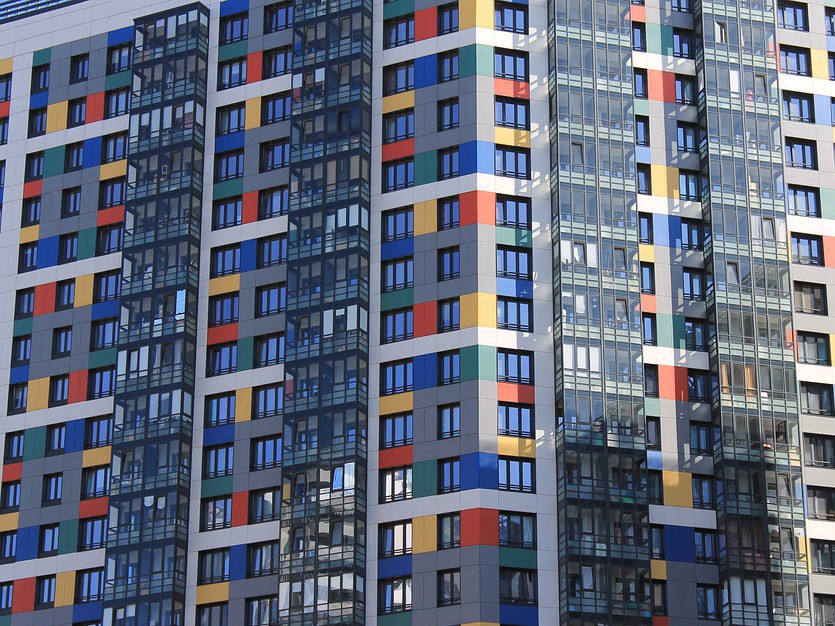CONSTRUCTION and housing sector members will be interested to know that 5 July saw the Building Safety Bill formally introduced in the House of Commons.
The introduction of the bill is an important milestone for the proposed reforms to building safety law. It also paves the way for the official formation of the independent Building Safety Regulator (BSR), a role the Health and Safety Executive (HSE) has been tasked with delivering.
Peter Baker, chief inspector of buildings at the HSE, said, “I welcome the introduction of the Building Safety Bill, which will give HSE the tools to deliver its important role as the Building Safety Regulator and is an important step in setting out what will be expected of future duty holders.
“Everyone involved in higher-risk buildings from design, construction and day-to-day operations will manage and control building safety in a way that is proportionate to the risks. This will ensure these buildings are safer for those who live in them and they have a stronger voice. I encourage duty holders to use the bill’s introduction in preparation for the new, more rigorous regulatory regime.
“The Building Safety Regulator will continue to work with industry and others to deliver the new building safety regime to ensure that residents of higher risk buildings are safe, and feel safe, in their homes now and in the future.”
The HSE will set up the Building Safety Regulator to oversee the new regime and will be responsible for ensuring that any building safety risks in new and existing high-rise residential buildings of 18m and above are effectively managed and resolved, taking cost into account.
This will include implementing specific gateway points at design, construction and completion phases to ensure that safety is considered at each and every stage of a building’s construction, and safety risks are considered at the earliest stage of the planning process.
These changes will simplify the existing system to ensure high standards are continuously met, with a ‘golden thread’ of information created, stored and updated throughout the building’s lifecycle, establishing clear obligations on owners and enabling swift action to be taken by the regulator, wherever necessary.
 David Osborne (left), chief executive of shower manufacturer Roman and a board member at Made in Britain, said, "The bill represents long-overdue progress to adhere to building regulations and is an important step in eliminating the culture of value engineering in building, which inevitably harms the resident. Such measures to bring focus towards quality rather than solely price is a welcome move for Made in Britain members engaged in the manufacture of construction products.”
David Osborne (left), chief executive of shower manufacturer Roman and a board member at Made in Britain, said, "The bill represents long-overdue progress to adhere to building regulations and is an important step in eliminating the culture of value engineering in building, which inevitably harms the resident. Such measures to bring focus towards quality rather than solely price is a welcome move for Made in Britain members engaged in the manufacture of construction products.”
Housing secretary Robert Jenrick said, “This bill will ensure high standards of safety for people’s homes, and in particular for high rise buildings, with a new regulator providing essential oversight at every stage of a building’s lifecycle, from design, construction, completion to occupation.
"The new building safety regime will be a proportionate one, ensuring those buildings requiring remediation are brought to an acceptable standard of safety swiftly, and reassuring the vast majority of residents and leaseholders in those buildings that their homes are safe."
The reforms will tackle bad practices head-on, building on Dame Judith Hackitt’s review of Building Regulations and Fire Safety, which highlighted a need for significant cultural and regulatory change.
Under the proposals, the government is more than doubling the amount of time, from six to 15 years, that residents can seek compensation for substandard construction work. The changes will apply retrospectively. This means that residents of a building completed in 2010 would be able to bring proceedings against the developer until 2025. These reforms also include new measures which apply to those seeking compensation for shoddy refurbishments which make the home unliveable.
New measures in the Building Safety Bill introduced will:
• Ensure there are clearly identified people responsible for safety during the design, build and occupation of a high-rise residential building.
• Establish a Building Safety Regulator to hold to account those who break the rules and are not properly managing building safety risks, including taking enforcement action where needed.
• Give residents in these buildings more routes to raise concerns about safety, and mechanisms to ensure their concerns will be heard and taken seriously.
• Extend rights to compensation for substandard workmanship and unacceptable defects.
• Drive the culture change needed across the industry to enable the design and construction of high-quality, safe homes in the years to come.
Minister for building and fire safety Lord Greenhalgh said: “The comprehensive steps we are taking today will ensure that industry and the regulatory system fully address the concerns raised in the ‘Building a Safer Future’ report by Dame Judith Hackitt.
"Though the overall risk of fire across all buildings remains low, we can’t be complacent – the more robust regime will take a proportionate and risk-based approach to remediation and other safety risks.
"And by increasing our measures of enforcement, we will make sure industry follows the rules – and is held to account when it doesn’t.
The bill will include powers to strengthen the regulatory framework for construction products, underpinned by a market surveillance and enforcement regime led nationally by the Office for Product Safety and Standards (OPSS). The national regulator will be able to remove products from the market that present safety risks and prosecute or use civil penalties against any business that breaks the rules and compromises public safety. The bill also contains measures to protect leaseholders by providing a legal requirement for building owners to explore alternative ways to meet remediation costs before passing these onto leaseholders, along with evidence that this has been done.
This builds on the government’s commitment to fully fund the cost of replacing unsafe cladding for all leaseholders in residential buildings 18 metres and over in England, with an unprecedented £5 billion investment in building safety. This is alongside the introduction of a new levy and a tax to ensure that industry pays its fair share towards the costs of cladding remediation.
Developers will also be required to join and remain members of the New Homes Ombudsman scheme, which will require them to provide redress to a homebuyer, including through the awarding of compensation. Developers who breach the requirement to belong to the New Homes Ombudsman may receive additional sanctions.
 Chair of the Independent Review of Building Regulations and Fire Safety Dame Judith Hackitt (left) said, “I am delighted that we have reached this important milestone for the Building Safety Bill. It is vital that we focus on getting the system right for the future and set new standards for building safety.
Chair of the Independent Review of Building Regulations and Fire Safety Dame Judith Hackitt (left) said, “I am delighted that we have reached this important milestone for the Building Safety Bill. It is vital that we focus on getting the system right for the future and set new standards for building safety.
"Residents and other stakeholders need to have their confidence in high-rise buildings restored and those who undertake such projects must be held to account for delivering safe buildings."
National Fire Chiefs Council chair, Mark Hardingham said, “We welcome this important bill’s introduction as it will contribute to essential developments in fire safety.
“We are focused on working with government and partners to fix the broken building regime, make buildings safer and restore public confidence.”
You can download a copy of the Building Safety Bill here.
By Made in Britain 4 years ago | By Made in Britain
